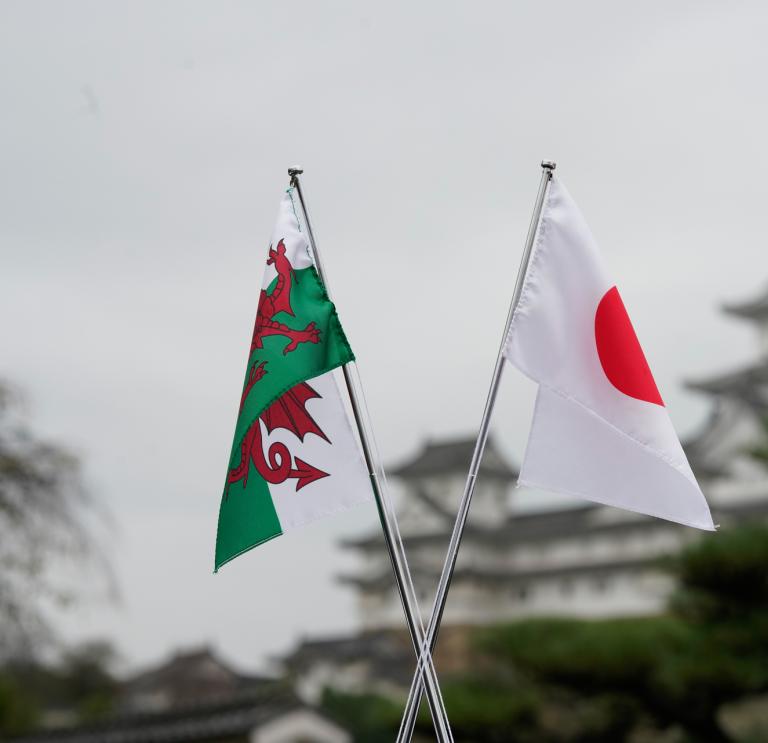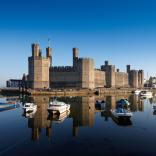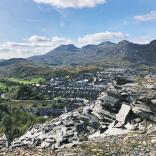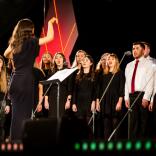Twinning UNESCO castles
The first and only twinning between two UNESCO world cultural heritage sites is that of Conwy Castle in North Wales and Himeji Castle in Hyogo, Japan. The twinning coincided with the Rugby World Cup 2019 and hopes to increase tourism exchanges while bringing together both Conwy and Hyogo - and their respective countries - through their shared love of history, castle culture and community.
Himeji-jo (what Himeji Castle is known as in Japan) is nicknamed White Heron Castle (Shirasagijo in Japanese), after its bright white walls and its high position at the top of a hill. It is the best-preserved example of a Japanese castle site from the 17th century, consisting of 83 separate buildings made largely of wood, plastered earthen walls and layered roofing.
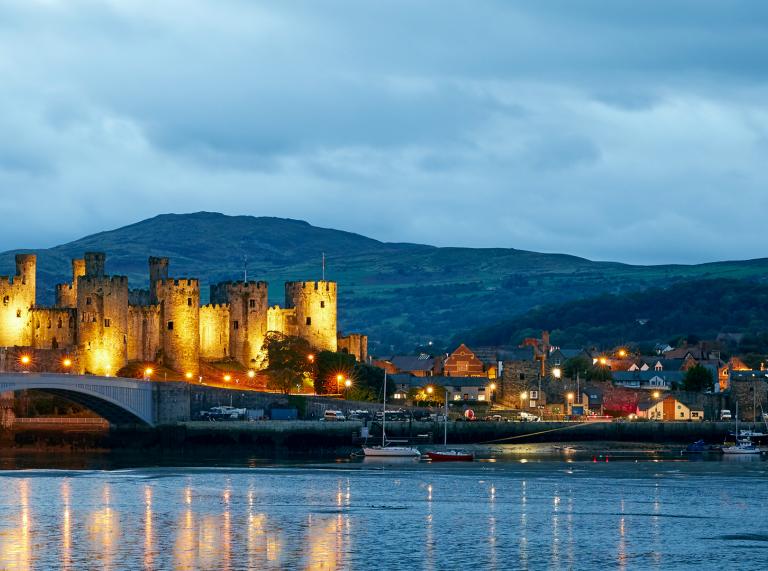
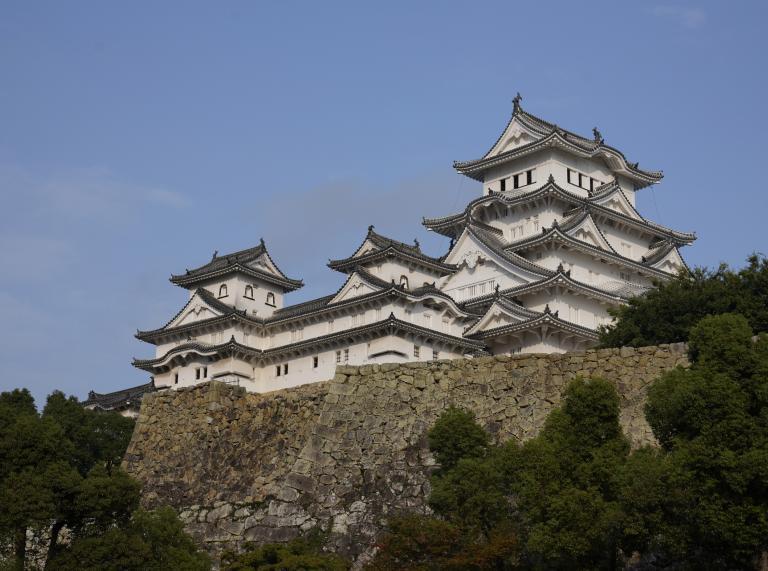
Enjoying sushi across the miles
It’s not just Conwy’s castle that’s drawing in crowds from Japan; the Japanese have a great love of Conwy as a whole, with many Japanese tourists heading there each year. It was named as one of the most picturesque places in Europe by the Japanese Association of Travel Agents – the only UK location to make it into the top 30. In celebration, Visit Conwy commissioned a local chef to create ‘wushi’, a Welsh take on sushi that includes lamb, cockles, cheddar, leeks and laverbread.
Inspiring Studio Ghibli
World-renowned filmmaker and animator Hayao Miyazaki, founder of Studio Ghibli, is a big fan of Wales. In fact, he was so moved by his visit to the Welsh valleys in the 1980s that is said to have inspired the first film animated by Studio Ghibli – Laputa: Castle in the Sky. He observed the Welsh miners on strike and saw how their struggle to protect their livelihoods was a symbol of the time, mirroring the plight of Japanese coal miners in his home country.
A later work, Howl's Moving Castle, is based on a fantasy book by Diana Wynn Jones, an author who was born in London but brought up in Wales during the Second World War. Jones’ book is partly set in Wales, but Miyazaki lifts the story into a fully fantastical land. It is thought that some smaller elements in Studio Ghibli’s other works were inspired by Welsh myths and legends.
Exchanging art
Many Welsh artists have been inspired by Japanese culture and worked or exhibited in Japan – and vice versa. Amgueddfa Cymru - the National Museum of Wales - is in partnership with the Modern Art Museum of Japan. In 2018 the Cardiff-based museum ran a hugely popular exhibition about Japanese culture titled ‘Kizuna’, which featured Japanese transport, teaware, decorative objects, paintings, manga and other cultural artifacts.
There are often other exhibitions of works by Japanese artists. 2019 sees the work of coalfield artist Sakubei Yamamoto on show in the UNESCO World Heritage Site Big Pit Museum and pieces by Nobuko Tsuchiya in MOSTYN, Llandudno. Every year since 2010, the Kotatsu Japanese Animation Festival has brought some of the best animated works from Japan to the big screens in Welsh arts venues.
Japan has hosted works of many Welsh creatives in group exhibitions over the years. These have included the works of David Nash at The Museum of Contemporary Art in Tokyo, a collection of Dylan Thomas works in Kyoto and a design exhibition featuring twelve glass and ceramic artists from Wales in Oita.
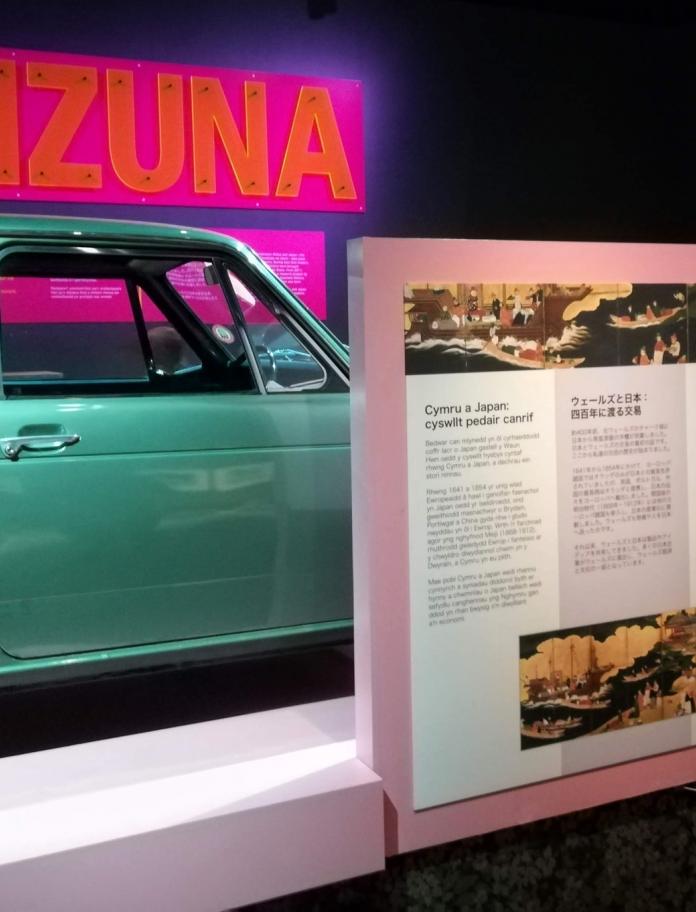
Sharing sports stars
Shane Williams MBE, the Welsh rugby union player famed for being one of the best wingers of all time, spent most of his years playing for Wales’ Ospreys and Wales’ national team. However, between 2012 and 2015 he played for the Japanese club Mitsubishi Sagamihara DynaBoars as a player-coach. Elsewhere, midfielder Junichi Inamoto joined Cardiff City Football Club between 2004-05.
Koji Tokumasu, the President of Asia rugby and one of the figures responsible for taking the World Cup to Japan, its first Asian host, was inspired to fall in love with the game during his time in Cardiff as a student.

Trading in the past, present and future
One of the earliest Japanese objects to come to Wales was a lacquered coffer made in the 1620s. The ornate chest was used to store valuables, but is now used as an exhibition piece. It was bought by the son of the governor of Denbigh Castle, Sir Thomas Myddelton I, who also bought Chirk Castle.
There have been many other trade deals over the centuries that followed. For example, when Japan developed its railway network in the 19th century, it used steel and iron from Dowlais Works in Merthyr Tydfil. This has been turned on its head today; high speed Hitachi trains from Japan are used in South Wales to link people with London. Japanese-owned companies are thought to employ around 6,000 people in Wales today. Major players including Sony and Toyota have a presence here and produce exports to Japan worth over £250 million annually.
Japan also appreciates the quality of Welsh produce with exports ranging from cheese and whisky through to the precision money-counting machines used on a daily basis at Japan’s world-famous convenience stores.
